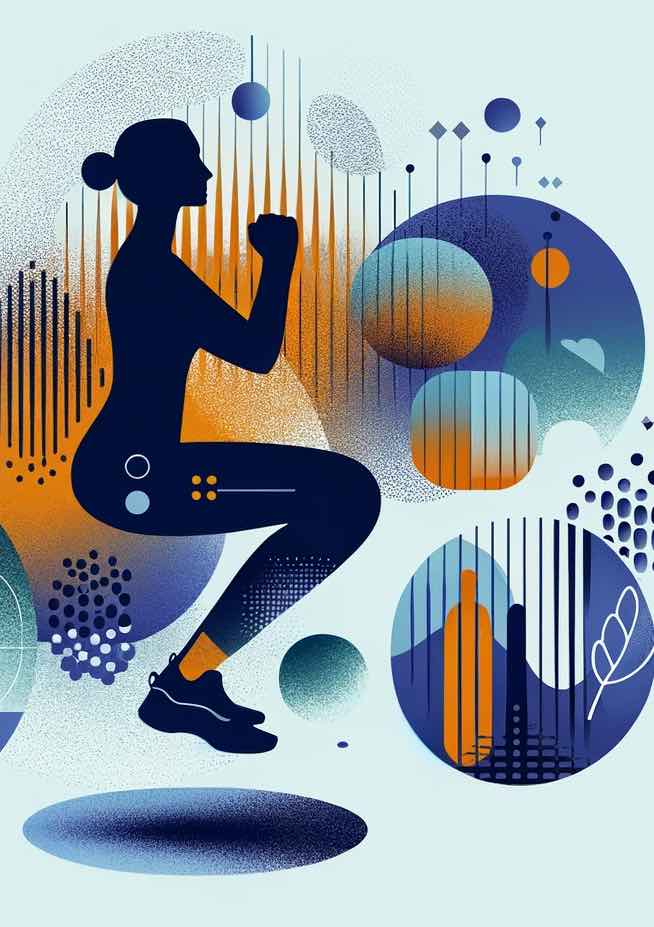
Pilates is a fantastic way to tone, strengthen, and improve flexibility. But did you know that you can utilize a simple wall to enhance your Pilates routine? Jenna Collins from Jenna Collins Fitness introduces a 15-minute beginner-friendly fat-burning wall Pilates workout that’s designed to engage your entire body.
Watch and learn from video here : 15 Min FAT BURNING Wall Pilates Workout (Beginner Friendly)
About the Workout:
This unique Pilates routine uses the wall as a prop to intensify the exercises. It’s a low-impact, full-body workout that aims to burn fat and tone the entire body using just the wall and your body weight. Whether you’re new to Pilates or looking for a fresh way to spice up your routine, this session is perfect for you.
Key Highlights:
- Duration: A concise 15-minute session that’s packed with effective exercises.
- Focus: The workout emphasizes full-body engagement, targeting everything from the legs and core to the arms and back.
- Accessibility: Suitable for all fitness levels, especially beginners. All you need is a wall and a mat.
- Benefits: Regular practice can help burn fat, improve muscle tone, and enhance overall flexibility.
A Glimpse into the Workout:
The session begins with foundational Pilates exercises adapted for the wall. Expect movements that challenge your balance, strength, and flexibility. Jenna guides you through each exercise, ensuring proper form and alignment.
Conclusion:
Pilates is known for its ability to transform the body, and this 15-minute wall Pilates session by Jenna Collins is no exception. It’s a refreshing take on traditional Pilates, offering a unique challenge that promises results. Commit to the routine, and you’ll be on your way to a toned and fit physique in no time.
Credit: This workout and video content are created by Jenna Collins from Jenna Collins Fitness.
Frequently Asked Questions: Wall Pilates with Jenna Collins
1. What is Wall Pilates, and how is it different from regular Pilates?
Wall Pilates is a variation of traditional Pilates that incorporates a wall for support and resistance. It helps improve alignment, balance, and strength—especially useful for beginners or those recovering from injury.
2. Can a 15-minute workout really burn fat?
Absolutely! While short, high-quality workouts like Jenna Collins’ Wall Pilates session can effectively kickstart fat burning by engaging multiple muscle groups and boosting your heart rate in a low-impact way.
3. Is this workout suitable for complete beginners?
Yes! This session is designed specifically for beginners. Jenna provides clear, easy-to-follow instructions that help you maintain proper form and avoid injury.
4. What equipment do I need for this workout?
All you need is a flat wall, a yoga mat or soft surface for floor work, and a little bit of space. No additional equipment is required!
5. Which muscles does this workout target?
This full-body session targets the core, glutes, thighs, arms, and back. The wall adds resistance and helps deepen muscle engagement in each move.
6. Is this workout safe for people with joint issues?
Yes, it’s a low-impact workout, making it gentler on the joints. However, if you have chronic joint problems or injuries, it’s best to consult a healthcare professional before starting.
7. How often should I do this workout to see results?
For best results, aim to do this workout 3–5 times a week. Consistency is key, and as you build strength, you can increase the duration or combine it with other routines.
8. Can Wall Pilates help with weight loss?
While Pilates alone won’t lead to drastic weight loss, it helps build lean muscle and improve metabolism. Combined with a balanced diet and other forms of cardio, it can contribute to overall fat loss.
9. Can I do this workout if I’m not flexible?
Yes, flexibility is not a prerequisite. In fact, regularly practicing Wall Pilates can improve your flexibility over time by gently stretching and lengthening muscles.
10. Where can I find more of Jenna Collins’ workouts?
You can follow Jenna Collins on her YouTube channel, Jenna Collins Fitness, for more Pilates tutorials, fitness tips, and beginner-friendly routines.













